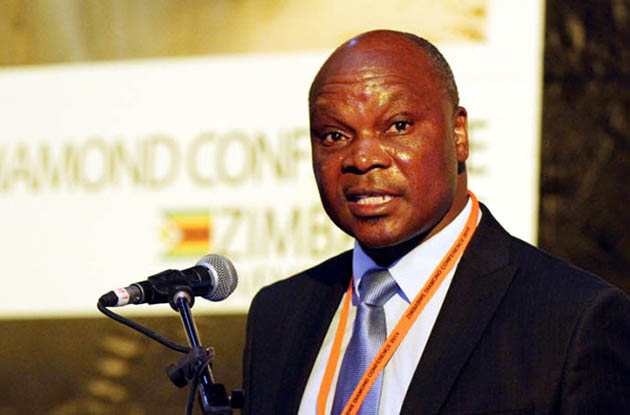Zimbabwe’s mining industry revenue is set to reach $3 billion this year, from $2 billion in 2016, as revenues from chrome mines whose exports had been previously banned consolidates sharp rises in other metals, Mines minister Walter Chidakwa has said.

The minister revealed this as official statistics showed sharp rises in mineral revenue in the first quarter of the year.
Mineral revenue rose by 23 percent during the first quarter of this year to $547 million, from $444,6 million at the same time last year, Chidakwa told the Chamber of Mines of Zimbabwe (CoMZ) annual general meeting (AGM) and conference in Victoria Falls .
He said there was scope for mineral revenues to improve this year, especially as chrome sales began to come through.
Chrome mines have returned to production after government lifted a 2011 export ban about a year ago.
It was one of many policy inconsistencies by government, whose policy flip flops have discouraged investors and triggered capital flight.
Chrome registered massive growth in revenue in the past year, rising to about $37 million during the quarter under review, from about $1,3 million during the prior comparative period, according to Chidakwa.
Government hoped that by lifting its grip on chrome exports, it would help the country offset a biting foreign currency crisis that has seen banks struggling with long queues, with imports undermined by a sharp drop in nostro accounts.
“During our strategic meeting at the ministry (of Mines) we said we want to get to $3 billion from $2 billion,” Chidakwa said in a speech to officially open the 78th CoMZ AGM and conference, which was held under the theme “From grow to Boom”.
“We may not get to $3 billion but we aspire to be at $3 billion. In the first quarter of this year, mining exports recorded $547 million from $444,6 million at the same time last year. We recorded a 23 percent increase. We hope we can sustain the 23 percent until the end of the year,” the minister said.
He said mineral sales had been driven by robust growth in platinum exports, which accounted for 42 percent of the total.
This was after international prices serious tumbled during the review period, hovering at around $900 per ounce in the past few months, from a peak of $1 800 per ounce during boom time between 2011 and 2012.
The past few weeks has been especially bad for platinum miners, who have seen prices slide to below $900 per ounce.
This sent shock waves across the world’s leading producers including Zimbabwe, which holds the second largest proven platinum resources after South Africa.
Overall revenues could have been higher had gold mines not been affected by extensive clogging in shafts and informal bullion mining pits, after a string cyclones and storms rattled mining fields at the beginning of the year, forcing sector players to halt production until weather conditions improved.
Chidakwa said hundreds of informal players, who are estimated to be producing about 43 percent of overall gold output in the country, switched back to farming to galvanise themselves from the shock of non production.
“That is what affected gold output,” he said.
“But the biggest shock was chrome. Chrome has overtaken nickel,” he added.
Outgoing CoMZ president Toendepi Muganyi implored government to address several issues that have affected the mining industry, including power supply and the tax regime.
He also urged government to speed up the development of the mineral development policy, which he said would shape the future of the industry in the coming years. Daily News






